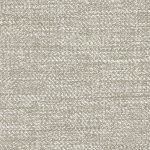In the world of textiles, innovation is constantly pushing boundaries, and one such breakthrough is Tencel. This extraordinary material has gained immense popularity in recent years due to its unique properties and sustainable production process. In this comprehensive guide, we will delve into the depths of Tencel, exploring its composition, manufacturing process, applications, and environmental benefits.
- Understanding Tencel:
Tencel, also known as lyocell, is a type of cellulose fiber derived from wood pulp. Unlike traditional fibers, Tencel is produced using a closed-loop solvent spinning process, where the solvent is recycled, making it an eco-friendly choice. The resulting fabric is known for its exceptional softness, breathability, and moisture-wicking properties. - Composition and Manufacturing Process:
Tencel is primarily composed of cellulose, the main building block of plant cell walls. The wood pulp used in its production is sourced from sustainably managed forests. The manufacturing process involves dissolving the wood pulp in a non-toxic solvent, which is then extruded through fine nozzles to form fibers. These fibers are then spun into yarns and woven into fabric. - Properties and Benefits:
Tencel boasts a range of remarkable properties that set it apart from other materials. Firstly, its moisture-wicking ability makes it ideal for activewear and bedding, as it helps regulate body temperature and keeps the skin dry. Secondly, Tencel is incredibly soft and gentle on the skin, making it suitable for sensitive skin types. Additionally, its breathability and anti-bacterial properties contribute to enhanced comfort and hygiene. - Versatile Applications:
The versatility of Tencel is evident in its wide range of applications across various industries. In the fashion industry, Tencel is used to create luxurious and sustainable clothing items such as dresses, shirts, and denim. Its ability to blend seamlessly with other fibers allows for endless possibilities in fabric design. Moreover, Tencel is also utilized in the production of home textiles, including bedding, towels, and upholstery, providing comfort and style to our living spaces. - Environmental Sustainability:
One of the key factors driving the popularity of Tencel is its eco-friendly nature. The closed-loop production process ensures minimal waste and chemical usage, making it a sustainable alternative to conventional fibers. Additionally, Tencel is biodegradable, meaning it can naturally decompose without harming the environment. By choosing Tencel, consumers can contribute to a greener future.
Conclusion:
Tencel has revolutionized the textile industry with its exceptional properties, sustainable production process, and versatile applications. From its origins as wood pulp to its transformation into a soft and durable fabric, Tencel has captured the attention of both fashion enthusiasts and environmentally conscious individuals. By embracing Tencel, we can enjoy the benefits of a material that combines comfort, style, and sustainability.



Average Rating